DE HAVILLAND COMET 1: THE FIRST JET AIRLINER FLIGHT TO CEYLON, IN 1952
Compiled by Gp Capt Kumar Kirinde, SLAF (Retd)
Based on written material and pictures supplied by Roger Thiedeman and Capt Dhamseth Pallawela
In 1952, less than 40 years since the birth of aviation in Ceylon/Sri Lanka, another significant milestone was reached. On Wednesday the 21st of May that year the first jet-powered airliner to arrive in Ceylon landed at Ratmalana Airport. The British Overseas Airways Corporation (BOAC) de Havilland D.H.106 Comet 1, an example of the world’s first jetliner, was following in the ‘vapour trails’ laid nearly 14 months earlier by the first jet-propelled aircraft of any type to touchdown on Lankan soil – five de Havilland Vampire and two Gloster Meteor fighter-jets of Britain’s Royal Air Force (see RAFOA e-Doc ‘First Jet Aircraft to Land in Sri Lanka’).
The Comet’s pioneering visit to Ceylon was one of several route-proving and crew familiarisation flights operated by BOAC, with at least one more to Colombo on Wednesday, July 30. While providing great publicity for the British flag-carrier and its brand-new, exciting, futuristic jetliners, those test flights were a preamble to the launch of scheduled Comet flights from London to Colombo on Monday, August 11, 1952.
The following four pages contain copies of local newspaper reports* of the Comet visits in May and July 1952, accompanied by complete transcripts of the text and photo captions. (*from Roger Thiedeman collection, via Department of National Archives, Colombo)
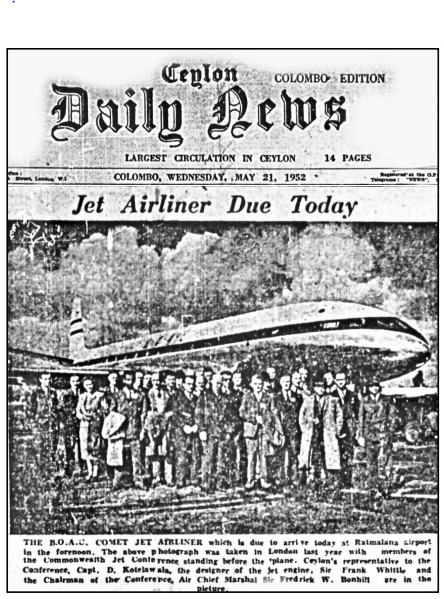
Ceylon Daily News, Wednesday, May 21, 1952
THE BOAC COMET JET AIRLINER which is due to arrive today at Ratmalana Airport in the forenoon. The above photograph was taken in London last year with members of the Commonwealth Jet Conference standing before the ’plane. Ceylon’s representative to the Conference, Capt. D. [Dixon] Kotelawala, the designer of the jet engine, Sir Frank Whittle, and the Chairman of the Conference, Air Chief Marshal Sir Frederick W. Bonhill, are in the picture.
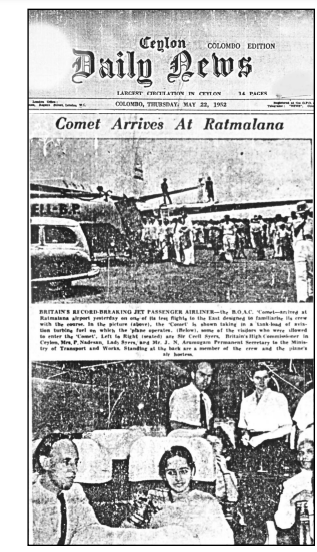 Ceylon Daily News, Thursday, May 22, 1952
Ceylon Daily News, Thursday, May 22, 1952
BRITAIN’S RECORD-BREAKING JET PASSENGER AIRLINER – the BOAC ‘Comet’ – arrived at Ratmalana airport yesterday on one of its test flights to the East designed to familiarise its crew with the course. In the picture (above), the ‘Comet’ is shown taking in a tank-load of aviation turbine fuel on which the ’plane operates. (Below), some of
the visitors who were allowed to enter the ‘Comet’. Left to right (seated) are Sir Cecil Syers, Britain’s High Commissioner in Ceylon, Mrs. P. Nadesan, Lady Syers and Mr. J.N. Arumugam, Permanent Secretary to the Ministry of Transport and Works. Standing at the back are a member of the crew and the ’plane’s air hostess.
Ceylon Daily News, Thursday, May 22, 1952

(Photo caption: CAPT. A. MAJENDIE, the Comet’s pilot) A LARGE crowd was present at Ratmalana airport yesterday to greet the arrival of the BOAC Comet jetliner on its first test flight to the East. The crowd delayed the ’plane’s departure by thirty minutes.
Heralded by a weird whistle, typical of jet ’planes, the Comet broke through a raincloud over Ratmalana airport at 11.10 a.m. then cruised over Colombo for five minutes before touching ground at 11.15 am.
It was the first jetliner to touch Ceylon ground, the first jet ’plane to touch Ratmalana. The crowd immediately surged towards the aircraft, some of the more fortunate being allowed inside.
Among them were Sir Cecil Syers, U.K. High Commissioner in Ceylon and Mr. P. Nadesan, Director of Civil Aviation. They inspected the ’plane at the request of the local BOAC officials.
The ’plane is equipped to carry 36 passengers in comfort includ-… (Regrettably, the remainder of this report, continued on another page, was not supplied by the Department of National Archives, Colombo.)
Ceylon Daily News, Thursday, July 31, 1952
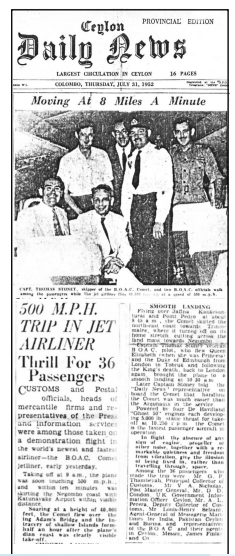
(Photo caption: CAPT. THOMAS STONEY, skipper of the BOAC Comet, and two BOAC officials walk among the passengers while the jet airliner flies 40,000 feet up at a speed of 500 m.p.h.) Customs and Postal officials, head of mercantile firms and representatives of the Press and information services were among those taken on a demonstration flight in the world’s newest and fastest airliner – the BOAC Comet jetliner, early yesterday.
Taking off at 9 a.m., the ’plane was soon touching 500 m.p.h., and within ten minutes was skirting the Negombo coast with Katunayake Airport within visible distance. Soaring at a height of 40,000 feet, the Comet flew over the
tracery of shallow islands forming Adam’s Bridge, and the Indian coast was clearly visible.
Flying over Jaffna, Kankesanturai and Point Pedro at about 9.45 a.m., the Comet skirted the north-east coast towards Trincomalee, where it turned off on its home stretch, cutting across the land mass towards Negombo.
Captain Thomas Stoney, veteran BOAC pilot, who flew Queen Elizabeth (when she was Princess) and the Duke of Edinburgh from London to Tobruk and following the King’s death, back to London again, brought the ’plane to a smooth landing at 10.30 a.m.
Later, Captain Stoney told the “Daily News” representative on board the Comet that handling the Comet was much easier than the Argonauts in the service.
Powered by four De Havilland “Ghost 50” engines each developing 5,000 lb static thrust for take-off at 10,250 r.p.m.,
the Comet is the fastest passenger aircraft in operation. In flight, the absence of any sign of engine, propeller or other
noise, together with a remarkable quietness and freedom from vibration, give the illusion of being lived in, rather than travelling through, space.
Among the 36 passengers who made the trip were: Mr. G.P. Thambeyah, Principal Collector of Customs, Mr. V.A. Nicholas, Post Master General, Mr. D.D. Condon, U.K. Government Information Officer, Ceylon, Mr. A.L. Perera, Deputy Collector of Customs, Mr. Louis-Henry Selzani, Agent-General of Messagerie Maritimes for India, Pakistan, Ceylon and Burma, and representative of the BOAC and their agents in Ceylon, Messrs. James Finlay and Co.
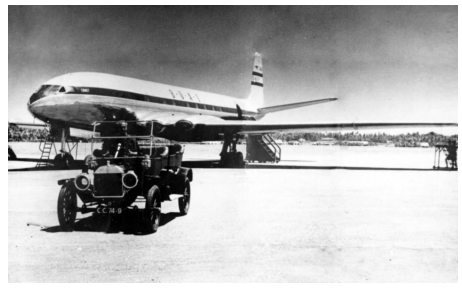
The BOAC Comet 1 (believed to be G-ALYP) and the 1913 Ford Model T photographed on the tarmac at Katunayake Airport represent major advances, 41 years apart, in the fields of air and road transport respectively.
Making its debut in 1949, the de Havilland Comet was the world’s first jetpowered airliner. The Model T, introduced by Henry Ford in 1908, achieved iconic status as one of the earliest mass-produced/assembly line-built automobiles, making car ownership affordable to middle-class Americans and, soon, motorists the world over.
Above photo was taken in 1953 to publicise Ceylon’s first ‘Old Crocks Rally’ for vintage motor vehicles, sponsored by the Ceylon Observer. At the time, this Ford ‘T’ was the property of Richard Pieris & Co. Ltd, sole agents for Ford cars and commercial vehicles in Ceylon.
The car is now owned by Mr. David Pieris, the former Royal Ceylon Air Force Volunteer Reserve pilot, who was profiled by Ashi Fernando in an online article titled ‘The Hard Boiled Change Agent’ which was also shared by the
compiler of this document.
Pic: Roger Thiedeman collection, via Lake House Group, Colombo
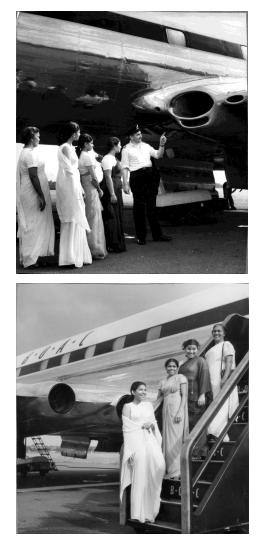
A quartet of Lankan ladies receiving a guided tour of a BOAC Comet 1 at Colombo Airport, courtesy of a crew member.
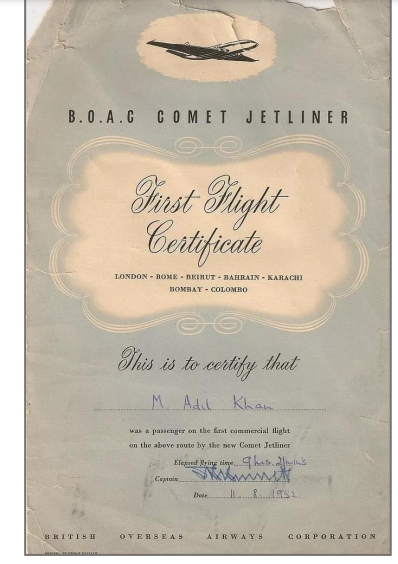
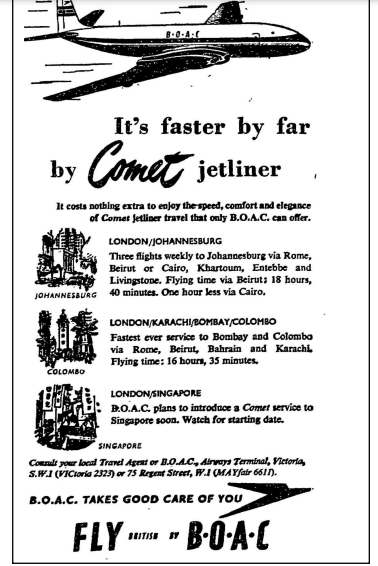
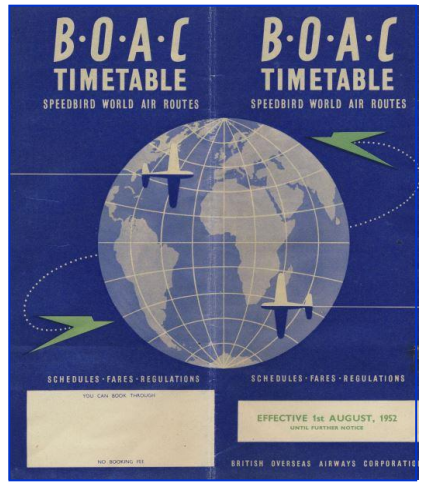
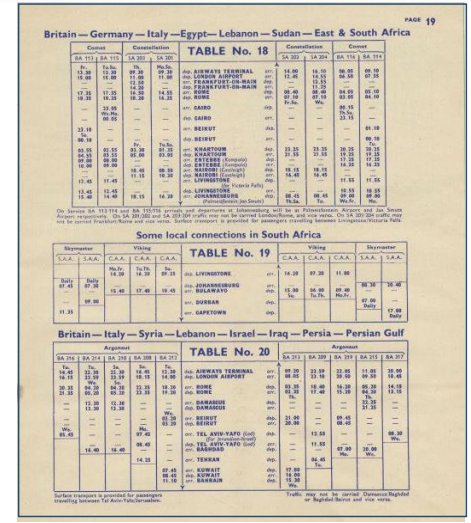
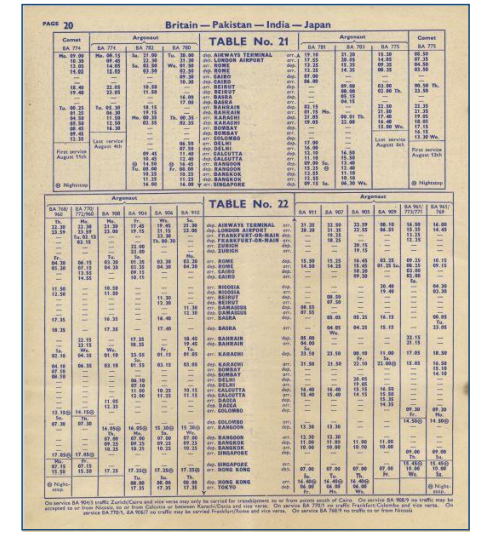
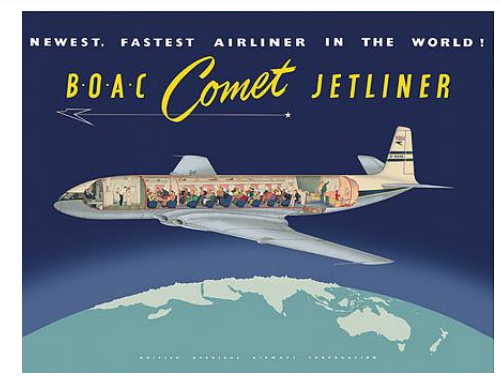
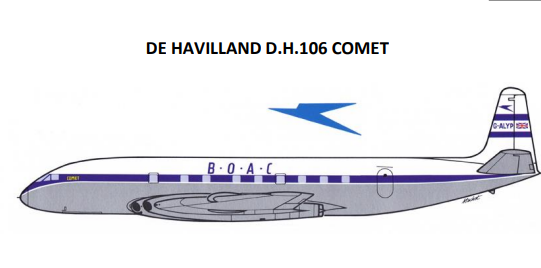
Pic Credit: Roger Thiedeman collection, from Comet: The World’s First Jet Airliner by R.E.G. Davies and Philip J. Birtles (illustrated by Mike Machat); Paladwr Press, USA, 1999
Conceived by the brilliant Sir Geoffrey de Havilland and his equally talented team of engineers in response to a 1943 British government specification for a transAtlantic, pressurised ‘mailplane’, the de Havilland D.H.106 Comet prototype made its maiden flight on July 27, 1949. It was powered by four de Havilland Ghost centrifugal-compressor turbojet engines from the drawing board of another of Sir Geoffrey’s able lieutenants, Major Frank Halford. Designing aero engines for de Havilland as early as 1927, when he created the Gipsy in-line four-cylinder motor for the legendary Moth and Tiger Moth biplanes, Halford was more recently responsible for the de Havilland Vampire’s Goblin gas turbine, from which the Comet 1’s Ghost powerplants were derived.
Entering service with British flag-carrier BOAC in May 1952 as the world’s first jet airliner, the Comet 1 operated a London-Johannesburg route, with Beirut a late substitution for an intermediate stop at Cairo owing to unrest in Egypt at the time. Only three months later BOAC added a once-weekly Comet service from London to Colombo, via Rome, Beirut, Bahrain, Karachi and Bombay. (See timetables 18 & 21 on pages 11 & 12 of this document.)
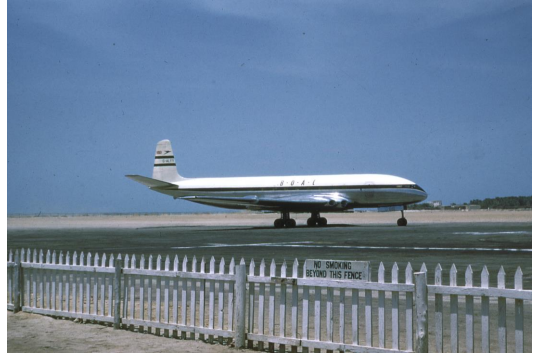
BOAC Comet 1 G-ALYY at Bahrain, one of the stops on the route of Flights BA774/775 between London and Colombo. Pic courtesy: Dhamseth Pallawela collection
Meanwhile, Comet 1s began flying with other customers: French airlines Air France and UAT (Union Aéromaritime de Transport; not to be confused with UTA/Union de Transports Aériens); Canadian Pacific Air Lines; and the Royal Canadian Air Force.
But before two years had elapsed since Comet 1 services began, no less than seven of the type were destroyed in accidents, four of them involving fatalities. Two of the crashes were attributed to aerodynamic design deficiencies, which de Havilland began rectifying. Another was believed to have been caused by structural failure during a violent storm near Calcutta. But when two BOAC-owned Comet 1s, registered G-ALYP and G-ALYY, inexplicably disintegrated in mid-air in January and April of 1954, respectively, both off the coast of Italy with a total of 56 lives lost, all Comets were grounded and further production suspended, pending investigation into the causes of the latest accidents.
Those investigations eventually revealed that metal fatigue was to blame, with cracks in the fuselage beginning at the ‘sharp’ corners of rectangular panels and window frames, and slowly spreading each time the cabin was pressurised for flight, ultimately resulting in explosive decompression.
Modifications including oval instead of rectangular windows were incorporated in subsequent developments of the type (all of which were powered by Rolls-Royce Avon axial-flow turbojet engines), starting with the Comet 2 and culminating in the Comet 4, plus the short-haul Comet 4B, and the Comet 4C, the latter with less range than the Comet 4 but greater than the 4B. (Only one Comet 3 prototype was built and flown).
Arguably one of the most beautiful jetliners ever, the Comet 4 scored another coup for de Havilland when BOAC operated the world’s first trans-Atlantic jet service, between London and New York, on October 4, 1958.
The Comet 4 was also familiar to Sri Lankans of a certain vintage, including this writer, from its regular visits to Katunayake Airport (and on a few occasions Ratmalana too) operating scheduled BOAC services as well as flights on behalf of Air Ceylon in a pool partnership between the airlines. In addition, Comet C2 aircraft (military versions of the Comet 2) of Royal Air Force Transport Command often called at Katunayake, or RAF Negombo as the base was called, until the British air arm finally departed Ceylon circa 1960.
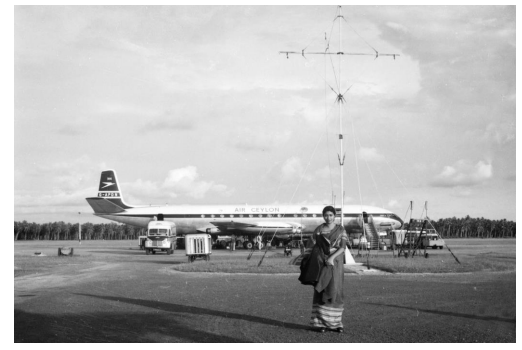
Mrs. Chandranie Pallawela, mother of Capt. Dhamseth Pallawela, at Katunayake Airport in 1962 before boarding BOAC/Air Ceylon Comet 4, G-APDN, while travelling to London for the first time. Pic courtesy: Dhamseth Pallawela collection
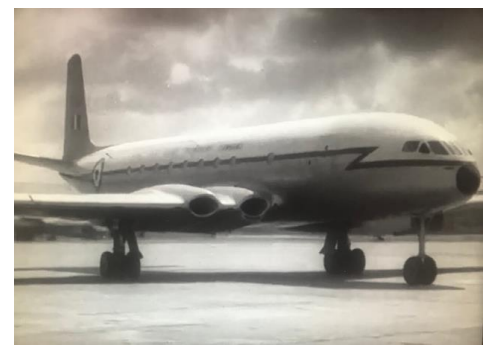
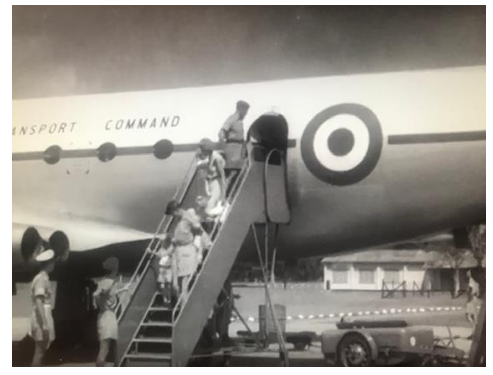
Two screenshots from a British Pathé newsreel of RAF Transport Command de Havilland Comet C2 (serial XK716; ‘fleet’ name Cepheus) of 216 Squadron at RAF Negombo (Katunayake) in 1957. Source: https://www.britishpathe.com/video/VLVA4OPC6MCPUADH6PUVKHHJODUO5- NEGOMBO-RAF-BASE-CEYLON/query/32+18
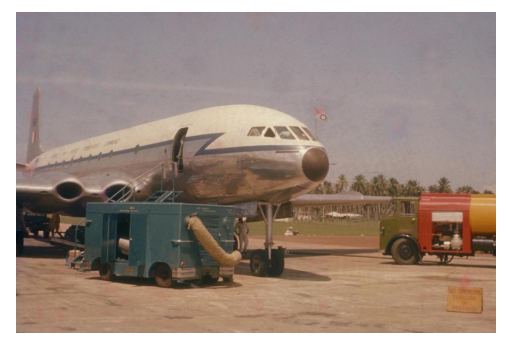
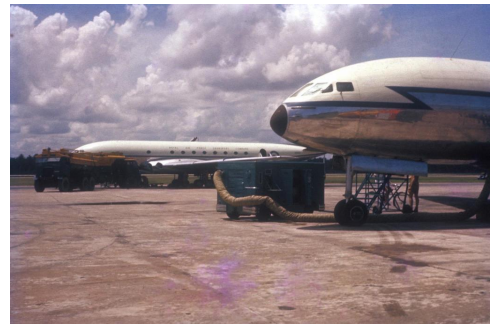
Two more photos of RAF Transport Command Comet C2 aircraft at RAF Negombo (Katunayake) Pic courtesy: Dhamseth Pallawela collection
Note to readers: A future issue of the RAFOA e-Docs will be a pictorial supplement to the above document, comprising a large selection of photos of de Havilland D.H.106 Comet aircraft of all types, from the extensive collection of Capt. Dhamseth Pallawela.







